We should all keep our eyes firmly on the road and if you’re at all observant, you may have noticed how many more cars have the small green panel on the left side of their number plates.
Introduced almost two years ago, they’re a public display that it’s a zero-emission, all-electric vehicle and although they’re not compulsory, many EV owners are happy to show to the world that they believe they’re doing their bit for the environment.
They’re definitely becoming more common and a sign that the electric revolution seems to be taking off, in spite of issues with the reliability and extent of the public charging infrastructure. On top of that, you have to dig deep if you want to be one of the plug-in people.
Electric choices greater than ever
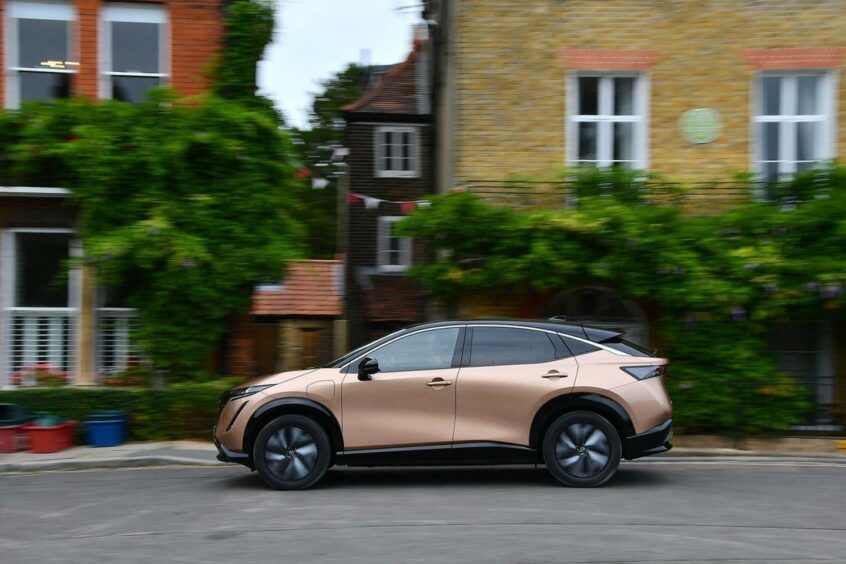
If you’ve already made the change, you’ll know only too well that there simply aren’t enough public chargers around and many of those seem to be suffering from technical issues.
In my experience, anything other than a rapid 50Kw charger is pretty useless, unless you are willing or able to leave your car plugged in for half a day on one of the smaller 22Kw or even more ridiculous 7Kw.
The answer is a wall-mounted charger installed at home but for many people in our towns and cities without a dedicated cable-accessible parking space, that’s a non-starter.
Being positive, the choice of electric vehicles is getting better all the time which explains the growth in the number of green-panelled registration plates.
Corporate with fresh and stylish looks
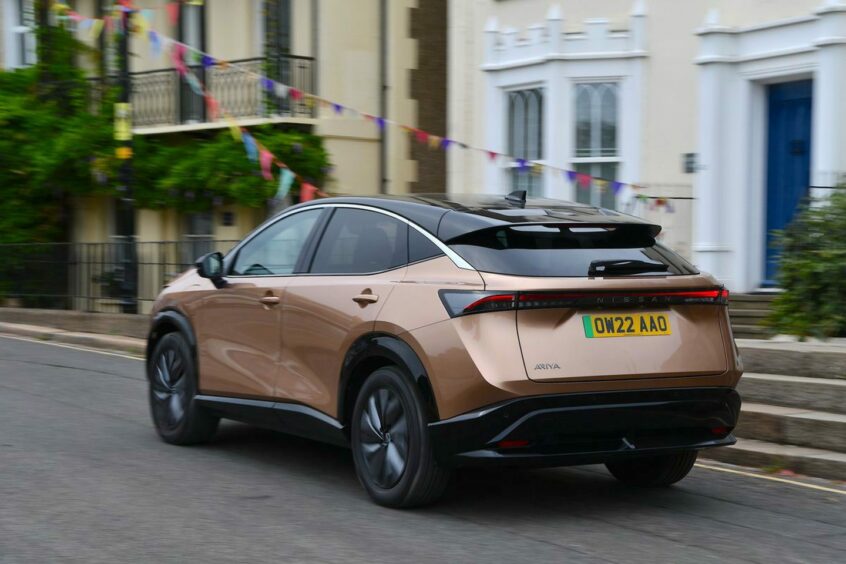
One of the most impressive I’ve driven recently is the Ariya family crossover SUV from Nissan.
For a start it looks pretty good, especially in the Ceramic Grey paintjob of the featured test car.
The designers have done a cracking job in coming up with something fresh and stylish while maintaining the corporate look. Despite all the technology under the surface, the car has clearly defined Nissan looks.
The company has led the way in electrification, breaking new ground years ago with their original Leaf compact when the rest of the industry held back. Even though it had a few drawbacks with a poor range of under 100 miles, it showed the potential of going all-electric.
Superb practicality and refinement
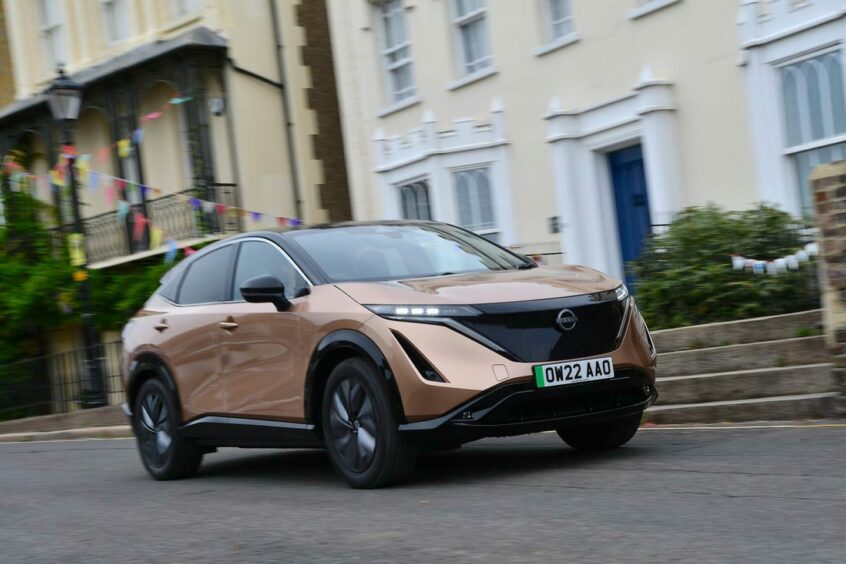
Apart from an electric van, the Ariya (Japanese for ‘honourable’ apparently)
is only the brand’s second electric vehicle and its first new one for more than a decade.
Other makes, such as Kia, Hyundai and Skoda, have made big strides forward in the meantime while Tesla continue to lead the market with buyers attracted by its electronic technology if not its automotive sophistication.
Aside from its looks, the Ariya is great to drive and as a medium-sized machine, offers superb practicality, refinement and the appeal of electric power to the growing environmentally-conscious market.
It’s about the same size as the conventional X-Trail with two battery options – an entry 63kWh model with 214bhp, while the larger 87kWh version in the featured car produces 238 bhp. Both are front-wheel-drive, with a potential range of between 250 miles and 322 miles on a single charge.
Confident, compliant, comfortable

Acceleration is smooth and it’s more than fast enough for a family SUV, helped by a chunky 300Nm of torque that carries the car along in quiet confidence. Refinement on the move is good, and while the suspension is firm, it is compliant enough for a comfortable ride.
The steering is light and positive and as the battery is low in the chassis, it feels solid and secure on the road.
The regeneration system on deceleration is effective, doing away with the need for much braking, which adds to the overall smooth and effortless drive…. exactly what EV motoring should be.
The elevated driving position provides superb forward visibility, especially when negotiating junctions, and the view out the back is good, too.
Higher spec brings real rewards
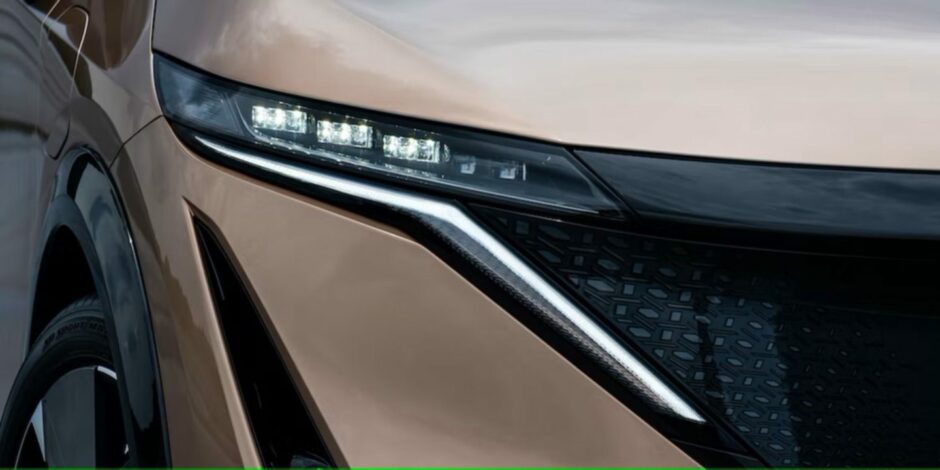
Passenger space is generous with good head and legroom all round and even the glass panoramic sunroof which is standard in the top-spec trim doesn’t affect rear headroom.
The Ariya’s floor is completely flat so a middle rear passenger doesn’t have to straddle a central tunnel and the centre console slides back and forward electronically to vary the front and rear leg room in the Evolve version.
There are only two trims to choose from – Advance and Evolve –and you certainly get a lot for your money in the higher spec with a huge amount of equipment on top of a comprehensive list of safety and comfort features, including intelligent cruise control, speed assist, rear cross traffic alert, emergency braking with pedestrian and cyclist recognition and lane-keep assist.
There are 10 Bose speakers, a full 12.3 inch TFT screen, 360-degree monitor with moving object detection, wireless phone charger, LED lights all round, electric sunroof and heated front windscreen.
Interior with simple to use, soft-touch materials
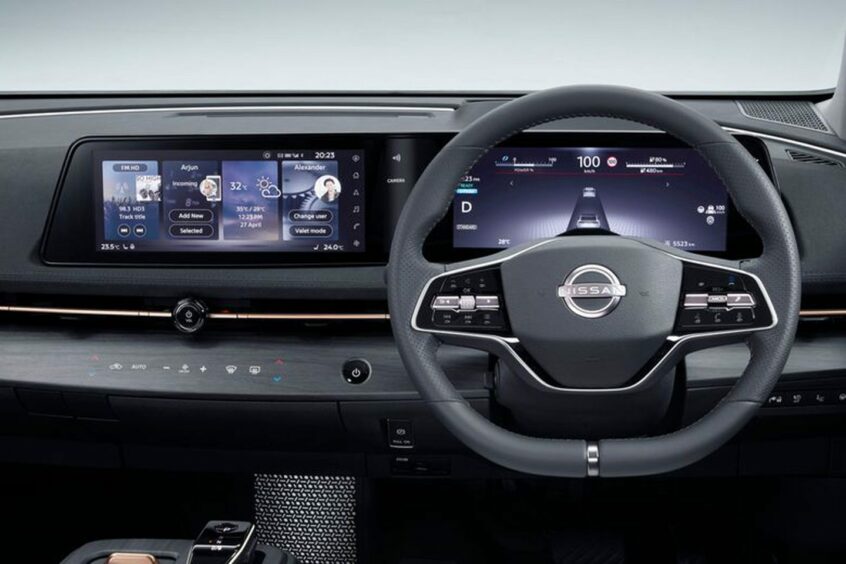
You might find, though, that if you use all that lot, you’ll drain your power and reduce considerably your range.
The dash is deliciously clean and simple with lots of soft-touch materials which extend to the inside of the doors, along with a big slab of what looks like wood, but of course won’t be, across the dashboard face.
Nissan has gone big on its Japanese heritage in the Ariya. We’re told the ambient LED lighting is inspired by traditional Japanese paper lanterns, apparently.
I can’t say if that’s the case or not. What I do know is the complete Ariya package is stylish, innovative and pretty impressive.

The Facts
Model: Nissan Ariya Evolve
Price: £53,590 (£54,335 as tested)
0-62 mph: 7.6 secs
Top speed: 100mph
Economy: 322 miles
CO2 emissions: og/km
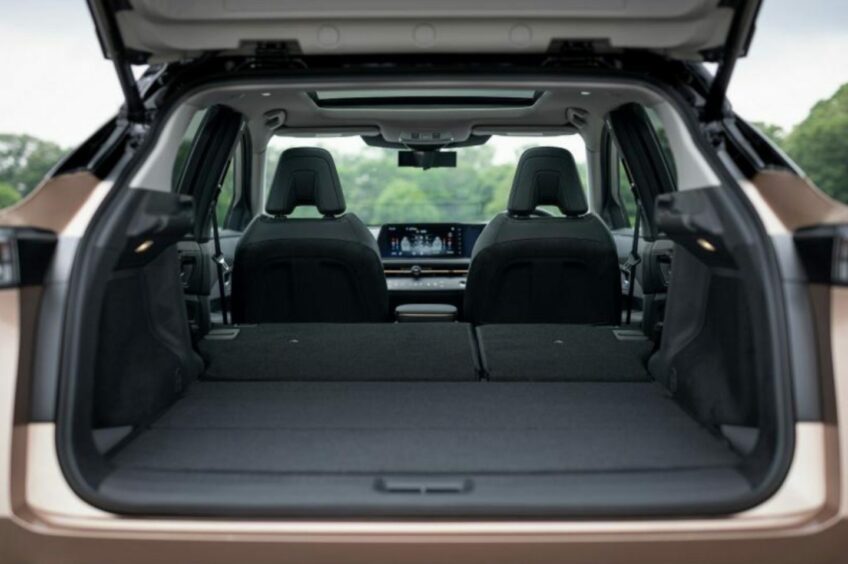
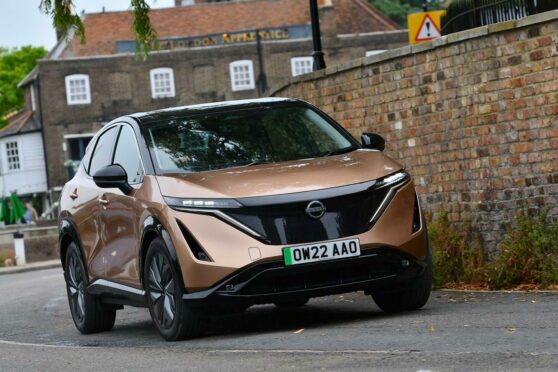
Conversation